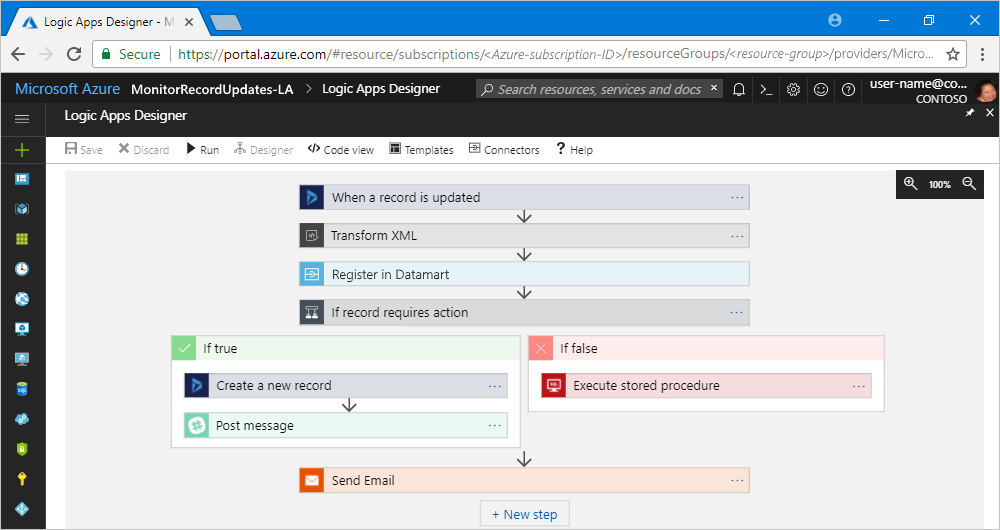Azure Logic Apps Example. Logic Apps connectors provide users with access to SaaS application and on premise data sources, click here for our growing list of Standard and Enterprise connectors. Connectors make it easy to unlock data and applications behind the firewall, securely connect to cloud-based services and take advantage of rich integration leveraging on. Create Azure Logic Apps using Visual Studio 2017. Open Visual Studio and connect to your AzureDevOps Instance Once connected, Click File -> New Project -> Cloud -> Azure Resource Group; 3. Select Logic app template and click next. 4. Open the logic app by Right Clicking the LogicApp.json -> Select Open With Logic App Designer. 5. Azure Logic Apps is a part of Azure App Service and it is basically used to automate the access and use of data across clouds without writing code. Azure Logic Apps is basically designed to orchestrate Business processes and System Integration based on some workflow defined according to the process by the user.

Azure Logic Apps provides extensive workflow capabilities and recently the Logic Apps team decoupled their engine into a set of reusable libraries that can be hosted in many different environments. This provided the ideal opportunity to combine the capabilities of Dapr with Logic Apps to enable a whole new class of business processing. Azure Logic Apps. If you have questions about Logic Apps, please visit the MSDN forums. If you have feedback regarding Logic Apps, such as suggestions for features or other observations, please visit feedback.azure.com. Connectors. Samples of custom connectors for Azure Logic Apps. Azure VM - Start, Stop, Deallocate, Restart, and more.
Introduction to Azure Logic Apps. LogicApps are a managed service that provides the Lego blocks of Azure serverless architecture that you can use to create, develop and deploy cloud-based integrations and workflows. The developer merely strings together off-the-shelf, ready-made components with as little effort as possible.
Azure Logic Apps provide a mechanism for application integration and workflow definition in the cloud. It provides a visual designer for configuring the workflows. You can define a workflow with connectors and logic creation using inbuilt standard connectors and enterprise integration connectors. The consumption model for Logic Apps and Azure Functions provide a specific auto-scale capability, i.e. when your load increases the Logic App or Function can scale with it to a certain point. Logic Apps can scale depending on the connector(s) you use, for instance, the File System connector current limit of 100 calls per minute . Create Azure Logic Apps using Visual Studio 2017. Open Visual Studio and connect to your AzureDevOps Instance Once connected, Click File -> New Project -> Cloud -> Azure Resource Group; 3. Select Logic app template and click next. 4. Open the logic app by Right Clicking the LogicApp.json -> Select Open With Logic App Designer. 5. So Azure Logic Apps is actually behind Power Automate so it shares a lot of the same functionality and connectors. All right, so this is an example of an Azure Logic App and typically it's triggered by something so it's server-less and it's typically event based. So something happens -- a file arrives or, in this case, an HTTP request is received.
